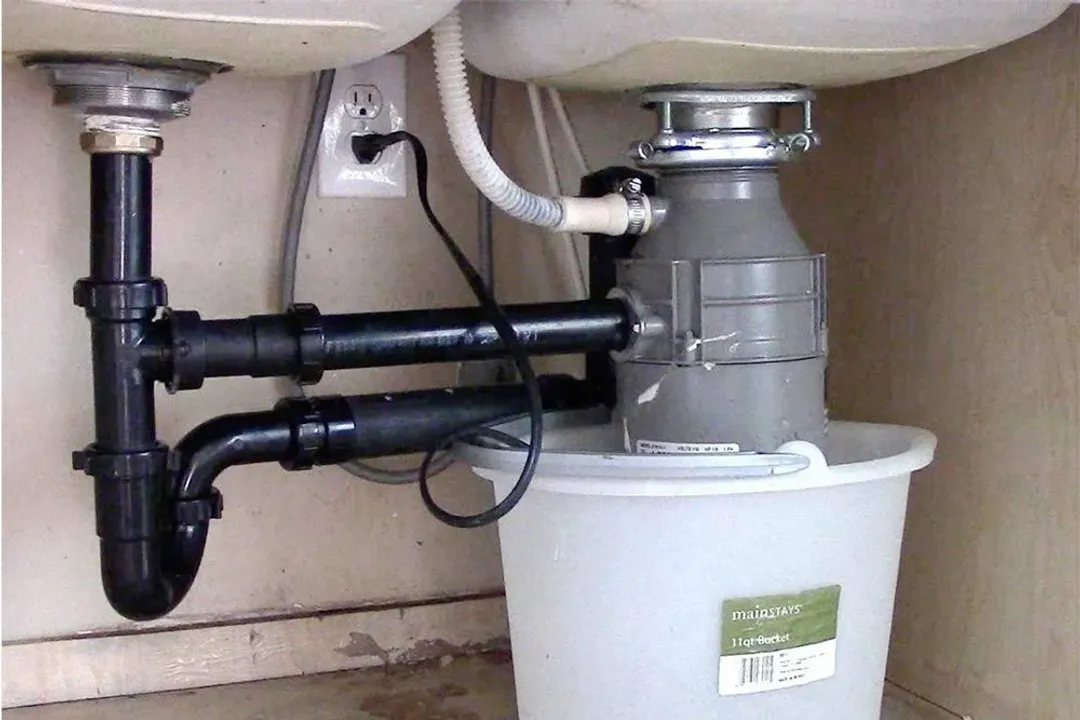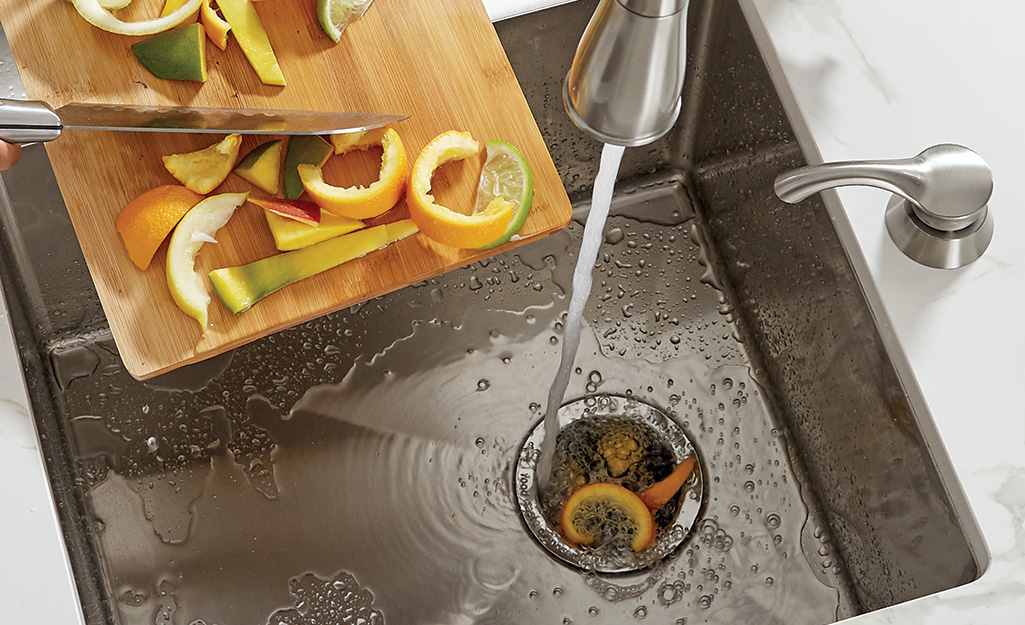Simple Instructions for Repairing a Leaky Waste Disposal
Simple Instructions for Repairing a Leaky Waste Disposal
Blog Article
This article following next on the subject of The Handy Guide To Fixing Your Garbage Disposal Leaking is indeed attention-grabbing. Read it yourself and see what you think about it.

Garbage disposals are necessary kitchen home appliances that help in disposing of food waste effectively. However, a dripping waste disposal unit can be an irritating and unpleasant trouble to deal with. Luckily, several leakages can be dealt with easily with a few easy steps. In this write-up, we will certainly go over how to deal with a leaking waste disposal unit efficiently.
Intro
Waste disposal unit are installed under kitchen sinks and are designed to shred food waste right into smaller pieces, permitting it to go through the pipes system conveniently. While these devices are usually trusted, leaks can happen over time as a result of damage, loose links, or damages to the unit.
Typical Root Causes Of Leakages in Waste Disposals
Worn Seals and Gaskets
Seals and gaskets play a vital duty in protecting against water from leaking out of the garbage disposal. With time, these parts can deteriorate, bring about leaks around the disposal system.
Loose Connections
The links in between the garbage disposal and the pipes system can become loose gradually, triggering water to leakage out throughout operation.
Cracks or Holes in the Disposal Device
Physical damage to the garbage disposal, such as fractures or holes in the real estate, can additionally cause leaks.
Determining the Source of the Leak
Prior to trying to repair a dripping waste disposal unit, it is essential to determine the source of the leak. This can commonly be done through aesthetic inspection or by conducting straightforward tests.
Visual Evaluation
Inspect the waste disposal unit device very carefully for any kind of indications of water leakage. Pay very close attention to locations around seals, gaskets, and link points.
Evaluating for Leakages
One method to check for leaks is by running water via the disposal device and looking for any type of visible indicators of leakage.
Devices and Products Needed for Repairing a Dripping Waste Disposal Unit
Before beginning the repair service procedure, collect the essential devices and materials, consisting of a screwdriver, adjustable wrench, plumber's putty, substitute seals or gaskets, and epoxy or patching material for fixing fractures or openings.
Step-by-Step Guide to Dealing With a Dripping Waste Disposal Unit
Shut off the Power
Before attempting any type of repair services, make sure that the power to the waste disposal unit unit is switched off to prevent the threat of electrical shock.
Situate the Leak
Recognize the exact area of the leakage and determine the reason.
Tighten Links
Utilize a wrench to tighten up any loose links between the disposal unit and the plumbing system.
Replace Seals or Gaskets
If the leak is due to worn seals or gaskets, get rid of the old elements and replace them with new ones.
Patching Splits or Openings
For cracks or holes in the disposal unit, usage epoxy or a suitable patching product to secure the broken area.
Checking the Garbage Disposal After Repair
Once the repair work is complete, evaluate the garbage disposal by running water through it to make sure that the leakage has been solved.
Preventive Maintenance Tips to Prevent Future Leaks
To avoid future leakages, it is necessary to do normal maintenance on your waste disposal unit. This consists of maintaining it clean, avoiding putting non-food items or hard objects down the disposal, and periodically looking for leaks or other concerns.
Conclusion
Finally, repairing a leaking garbage disposal is a fairly simple process that can be finished with fundamental tools and materials. By following the steps laid out in this short article and practicing precautionary maintenance, you can maintain your garbage disposal in good working condition and stay clear of expensive repairs in the future.
What to Do About a Leaking Garbage Disposal
A leaking garbage disposal often goes unnoticed until you confront a sopping cabinet, a foul-smelling puddle, or an audible drip-drip-drip from the unit. The fix can be frustrating, too, because the leak can stem from a number of components in the system. Fortunately, with a little sleuthing, you can zero in on the leak and—depending on the exact location—stop the icky oozing and repair the component that caused it. Worst case scenario, if it turns out that the garbage disposal must be replaced, installing a new one is a reasonable do-it-yourself task for those with basic plumbing skills. Read on to keep the cash you’d otherwise hand over to a pro.
Prepare to find the leak
Prior to testing the garbage disposal for leaks, unplug it at the wall outlet and turn off the power from the breaker box to prevent electrical shock. Then insert a watertight sink stopper into your sink drain and wipe the unit dry with a clean cloth. In any handy container, mix a few drops of food coloring into a few cups of water, and pour the dyed water onto the sink stopper to help you locate the leak.
Investigate the source
the top, where the disposal meets the sink drain the side, where the dishwasher hose or main drain pipe connects to the disposal or the bottom of the unit Inspect each of these locations while gliding a light-colored rag over the unit; the dyed water will readily show on the rag and reveal the location of the leak. If a leak isn’t immediately apparent, remove the sink stopper and pour a few more cups of dyed water down the sink drain, then check for leaks again. Leaks near the top of the unit are more likely to show themselves while the sink is plugged, while side and bottom leaks are more noticeable while the sink is unplugged.
The metal sink flange that sits directly inside the sink drain is typically sealed around the top with plumber’s putty (a clay-like sealant) and then secured from under the sink with bolts. If the plumber’s putty deteriorates, or the bolts loosen, the flange can no longer form a watertight seal between the sink drain and the disposal—which could cause a leak at the top of the unit.
To reseal the leaky flange, you must first detach the garbage disposal. Start by loosening the screws securing the main drain pipe to the disposal, then loosen the screws in the metal clamp securing the dishwasher hose to the disposal and detach the drain pipe and dishwasher hose from the disposal. Loosen the screws in the mounting ring that connects the disposal to the metal mounting assembly beneath the sink, then pull down the disposal and carefully set it on a clean, dry surface. Loosen the bolts in the mounting assembly with a wrench, then pull down the mounting assembly and set it near the disposal.

I'm just very inquisitive about Tips on Fixing a Leaking Garbage Disposal and I am praying you appreciated the entire page. Feel free to set aside a second to promote this write-up if you enjoyed reading it. Thanks a bunch for your time. Please stop by our blog back soon.
Request Your Service Report this page